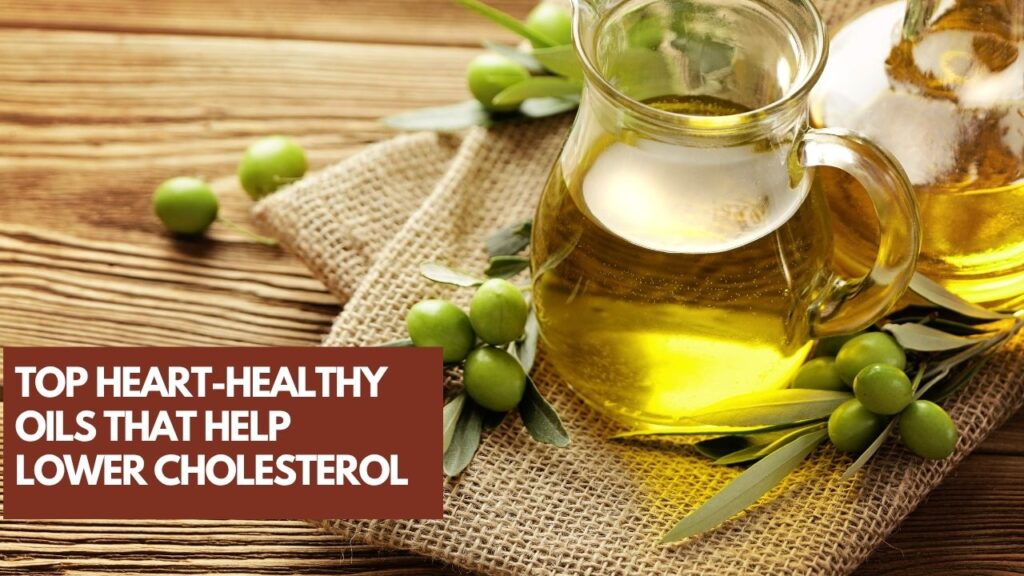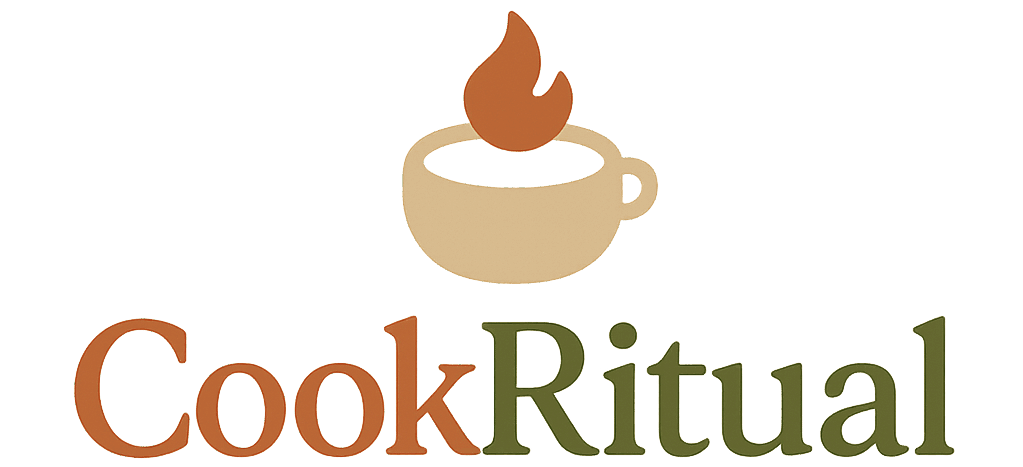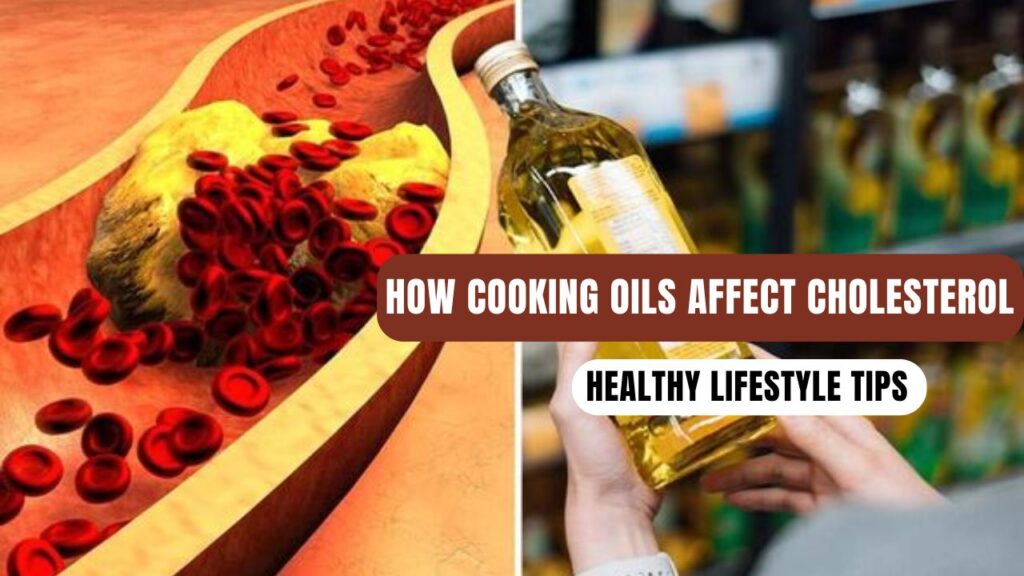Choosing the right cooking oil can either support or sabotage our heart health. That’s because the fats in our favorite oils don’t just add flavor—they directly influence cholesterol levels, which play a key role in cardiovascular well-being.
In today’s busy world, it’s easy to reach for whatever oil is on hand. But when we understand how cooking oils affect LDL (bad) and HDL (good) cholesterol, we can make smarter choices that benefit long-term health—without sacrificing taste or convenience.
In this guide, we’ll break down the science behind oils and cholesterol in simple terms. Whether we’re sautéing veggies after a long workday or meal prepping for the week, knowing which oils help (and which hurt) can make a big difference. We’ll also explore healthier alternatives, cooking methods, and tips for creating a cholesterol-friendly kitchen—perfect for health-conscious individuals and busy professionals alike.
Contents
- 1 Cholesterol 101: HDL vs LDL and Why It Matters
- 2 Types of Cooking Oils and Their Effects on Cholesterol
- 3 Top Heart-Healthy Oils That Help Lower Cholesterol
- 4 Oils to Limit or Avoid for Better Cholesterol Management
- 5 How Cooking Methods Influence Cholesterol Impact
- 6 Practical Tips for Choosing and Using Healthy Cooking Oils
- 7 Comparing Popular Oils: Olive Oil vs Canola Oil vs Coconut Oil
- 8 Healthy Eating Habits to Support Balanced Cholesterol Levels
- 9 FAQs: Common Questions About Cooking Oils and Cholesterol
- 10 Conclusion: Cooking Oils and Cholesterol — Simple Choices for Lasting Heart Health
Cholesterol 101: HDL vs LDL and Why It Matters

What Is Cholesterol?
Cholesterol is a waxy, fat-like substance found in every cell of the body. Our bodies need it to make hormones, vitamin D, and substances that help digest food. But too much cholesterol in the blood can lead to health problems—especially heart disease.
We get cholesterol from two main sources: our liver and the food we eat. While the liver makes all the cholesterol we need, foods high in saturated and trans fats can raise our blood cholesterol levels too much.
Learn more from Harvard Health on cholesterol.
The Good vs The Bad: HDL and LDL
There are two main types of cholesterol:
- LDL (Low-Density Lipoprotein) – Often called “bad” cholesterol. It can build up in the walls of our arteries and increase the risk of heart attack or stroke.
- HDL (High-Density Lipoprotein) – Known as “good” cholesterol. It helps remove LDL from the bloodstream by carrying it to the liver, where it’s broken down and removed.
Keeping a healthy balance between HDL and LDL is key. Our goal should be to lower LDL and raise HDL, and the types of fats in our cooking oils can make a big difference.
How Fats Affect Cholesterol
- Saturated fats raise LDL levels.
- Trans fats increase LDL and lower HDL—a double risk.
- Unsaturated fats (monounsaturated and polyunsaturated) help improve cholesterol levels.
The American Heart Association explains which fats to eat more of and which to limit.
Types of Cooking Oils and Their Effects on Cholesterol
Saturated vs Unsaturated Fats in Oils
Cooking oils come from both plant and animal sources, and they contain different types of fats.
| Fat Type | Effect on Cholesterol | Common Oils |
| Saturated Fats | Raise LDL (“bad”) cholesterol | Coconut oil, palm oil, butter |
| Trans Fats | Raise LDL and lower HDL (“good”) cholesterol | Hydrogenated oils, shortening (often in fast food) |
| Monounsaturated Fats | Lower LDL and raise HDL | Olive oil, avocado oil, peanut oil |
| Polyunsaturated Fats | Help reduce LDL and may raise HDL | Sunflower oil, soybean oil, flaxseed oil |
Trans fats are the most harmful. Many have been removed from foods in the U.S., but some still appear in packaged or fried items. The FDA has banned artificial trans fats, but it’s still smart to check labels for “partially hydrogenated oils.”
Omega Fatty Acids: The Good Kind of Fat
Omega-3 and omega-6 fatty acids are types of polyunsaturated fats. They’re essential for brain health and can help lower LDL levels. We can find them in oils like flaxseed, walnut, and canola.
Read more from the National Institutes of Health on omega-3s.
Top Heart-Healthy Oils That Help Lower Cholesterol

The Best Oils for Heart Health
Some cooking oils not only avoid raising cholesterol—they actively help lower it. These oils are rich in unsaturated fats and antioxidants, making them great for everyday use.
| Oil | Key Benefit | Best Use |
| Olive Oil | Rich in monounsaturated fat; raises HDL | Drizzling, sautéing |
| Canola Oil | Low in saturated fat; contains omega-3s | Baking, stir-frying |
| Avocado Oil | High smoke point; vitamin E & monounsaturated | Grilling, roasting |
| Flaxseed Oil | High in ALA (a plant-based omega-3) | Cold dishes, salad dressings |
Why These Oils Work
These oils are known to:
- Reduce inflammation
- Improve blood vessel function
- Lower “bad” LDL and raise “good” HDL
They also fit well into the Mediterranean diet, which is widely praised for heart health. You can explore more from Cleveland Clinic’s guide to healthy oils.
Choosing the right oil doesn’t have to be confusing. The key is to look for unrefined, cold-pressed or extra virgin varieties whenever possible. These keep more nutrients intact and offer greater health benefits.
Oils to Limit or Avoid for Better Cholesterol Management

Palm Oil and Coconut Oil: A Mixed Bag
Palm oil and coconut oil are popular in many kitchens, but they are high in saturated fat. Saturated fats can raise LDL (bad) cholesterol levels, which may increase the risk of heart disease over time.
- Palm oil is often used in processed foods. It’s semi-solid at room temperature and adds shelf life.
- Coconut oil, though praised for its antioxidants, contains more saturated fat than butter.
While both oils have some healthful compounds, Harvard Health warns against regular use if we’re trying to lower cholesterol. It’s best to use them sparingly, especially if heart health is a concern.
Trans Fats: Hidden in Plain Sight
Trans fats are the worst type of fat for cholesterol. They not only raise LDL but also lower HDL. Even small amounts can be harmful.
Trans fats can still be found in:
- Margarine and shortening
- Fried fast foods
- Packaged baked goods
- Non-dairy creamers
Always check food labels for “partially hydrogenated oils,” which is another name for artificial trans fats. According to the U.S. Food & Drug Administration (FDA), most artificial trans fats have been phased out in the U.S., but trace amounts still exist in some imported and shelf-stable products.
How to Read Oil Labels
To avoid hidden saturated and trans fats:
- Choose oils labeled “non-hydrogenated”
- Look for low saturated fat (under 2g per tablespoon)
- Pick oils that are cold-pressed or extra virgin
Simple changes in oil choices can lead to big heart health wins.
How Cooking Methods Influence Cholesterol Impact
Frying vs Baking vs Sautéing: What’s Healthier?
The way we cook with oil matters just as much as the oil itself.
- Frying often uses high heat, which can damage healthy fats and create harmful compounds.
- Baking and roasting use lower heat and less oil.
- Sautéing with a small amount of oil over medium heat is one of the best options for preserving nutrients.
According to Johns Hopkins Medicine, dry cooking methods like roasting, grilling, and steaming are best for heart health.
Smoke Point of Oils and Fat Quality
Every oil has a smoke point—the temperature at which it starts to break down. Cooking oils past this point can destroy good fats and release harmful chemicals.
| Oil | Smoke Point (°F) | Best Use |
| Olive Oil (Extra Virgin) | ~375°F | Sautéing, drizzling |
| Canola Oil | ~400°F | Baking, stir-frying |
| Avocado Oil | ~520°F | High-heat cooking, grilling |
| Coconut Oil | ~350°F | Baking, low-heat cooking |
Keep heat moderate and avoid reusing oil, especially for frying. Used oil can produce oxidized fats, which may increase inflammation and cholesterol.
Practical Tips for Choosing and Using Healthy Cooking Oils
Choosing the Right Oil for the Job
Not every oil fits every meal. Here’s a quick guide:
- For low-heat cooking or salads: Go for extra virgin olive oil or flaxseed oil.
- For high-heat cooking: Choose avocado oil or refined canola oil.
- For baking: Canola oil and light olive oil work well due to their neutral flavor.
Need help picking? Use the American Heart Association’s list of heart-healthy cooking oils.
How to Store Oils the Right Way
Oils can spoil if not stored correctly. Rancid oils lose nutrients and may develop harmful byproducts.
- Keep oils in a cool, dark place
- Use airtight containers
- Avoid heat sources like stoves or windows
Most oils stay fresh for 6–12 months. Smell them before use—if they smell “off,” it’s time to toss.
Portion Control and Cooking Smarter
Even the healthiest oil adds calories. One tablespoon has about 120 calories. Here’s how to keep portions in check:
- Use a measuring spoon instead of pouring freely
- Try an oil spray to lightly coat pans
- Sauté with broth or water for extra flavor and fewer calories
Simple kitchen habits like these can help lower cholesterol while keeping meals full of flavor.
Comparing Popular Oils: Olive Oil vs Canola Oil vs Coconut Oil
Nutritional Breakdown and Benefits
Choosing the right oil means knowing how their fats affect cholesterol and overall health. Here’s a simple comparison:
| Oil | Saturated Fat | Monounsaturated Fat | Polyunsaturated Fat | Cholesterol Impact | Best Use |
| Olive Oil | 14% | 73% | 11% | Lowers LDL, raises HDL; heart-healthy | Salad dressings, sautéing |
| Canola Oil | 7% | 63% | 28% | Lowers LDL; source of omega-3 fatty acids | Baking, stir-frying |
| Coconut Oil | 82% | 6% | 2% | Raises LDL; use sparingly | Baking, low-heat cooking |
Olive oil, especially extra virgin, is rich in antioxidants that reduce inflammation. Canola oil provides a good balance of healthy fats and omega-3s. Coconut oil is high in saturated fat, so it’s best to use it occasionally and in moderation.
For more detailed info, check Harvard T.H. Chan’s Nutrition Source.
Healthy Eating Habits to Support Balanced Cholesterol Levels
How to Incorporate Healthy Fats Daily
Eating heart-healthy oils is just one piece of the puzzle. Here’s how to build a balanced, cholesterol-friendly diet:
- Use healthy oils in cooking and dressings.
- Eat plenty of fiber-rich foods like fruits, vegetables, and whole grains to help lower cholesterol.
- Include lean proteins such as fish, chicken, and plant-based proteins.
- Limit processed foods high in saturated and trans fats.
- Stay hydrated and maintain an active lifestyle.
Sample Meal Plan Ideas
- Breakfast: Oatmeal topped with flaxseed oil and fresh berries
- Lunch: Mixed greens salad with olive oil vinaigrette and grilled chicken
- Dinner: Stir-fried vegetables with canola oil and quinoa
Planning meals around healthy fats and whole foods supports steady cholesterol control and energy throughout the day.
FAQs: Common Questions About Cooking Oils and Cholesterol
Does frying with olive oil increase cholesterol?
No, frying with olive oil at moderate temperatures is generally safe. Extra virgin olive oil has a moderate smoke point and contains healthy fats that don’t harm cholesterol when used properly. Avoid overheating or reusing the oil.
Is coconut oil good or bad for cholesterol?
Coconut oil raises LDL (“bad”) cholesterol but may also raise HDL (“good”) cholesterol. Because of its high saturated fat content, it’s best used in small amounts and balanced with other healthy oils.
What is the healthiest oil to cook with?
Extra virgin olive oil and avocado oil are among the healthiest choices. They are rich in heart-healthy fats and antioxidants and suitable for most cooking methods.
How much oil is too much?
Even healthy oils are calorie-dense. Limit added oils to about 2-3 tablespoons per day to avoid excess calories while gaining benefits.
For detailed answers and more FAQs, see the Mayo Clinic’s guide on fats.
Conclusion: Cooking Oils and Cholesterol — Simple Choices for Lasting Heart Health
Choosing the right cooking oils is one of the easiest ways to support healthy cholesterol levels and protect our hearts. By favoring oils rich in unsaturated fats—like extra virgin olive oil, avocado oil, and canola oil—we can lower “bad” LDL cholesterol and boost the “good” HDL cholesterol. Avoiding oils high in saturated fat and trans fats, such as coconut oil and hydrogenated oils, helps keep arteries clear and reduces heart disease risk.


